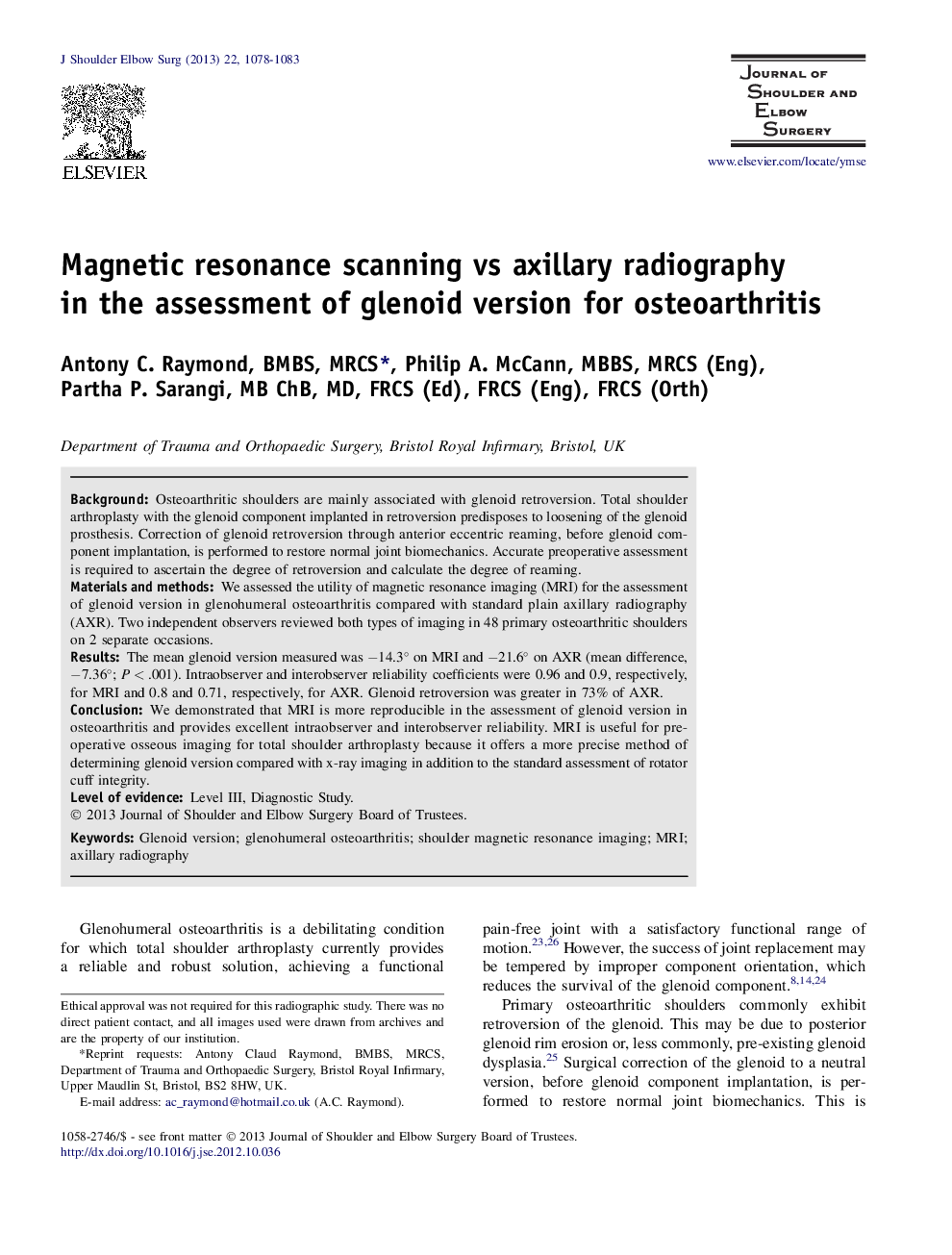| Article ID | Journal | Published Year | Pages | File Type |
|---|---|---|---|---|
| 4073634 | Journal of Shoulder and Elbow Surgery | 2013 | 6 Pages |
BackgroundOsteoarthritic shoulders are mainly associated with glenoid retroversion. Total shoulder arthroplasty with the glenoid component implanted in retroversion predisposes to loosening of the glenoid prosthesis. Correction of glenoid retroversion through anterior eccentric reaming, before glenoid component implantation, is performed to restore normal joint biomechanics. Accurate preoperative assessment is required to ascertain the degree of retroversion and calculate the degree of reaming.Materials and methodsWe assessed the utility of magnetic resonance imaging (MRI) for the assessment of glenoid version in glenohumeral osteoarthritis compared with standard plain axillary radiography (AXR). Two independent observers reviewed both types of imaging in 48 primary osteoarthritic shoulders on 2 separate occasions.ResultsThe mean glenoid version measured was −14.3° on MRI and −21.6° on AXR (mean difference, −7.36°; P < .001). Intraobserver and interobserver reliability coefficients were 0.96 and 0.9, respectively, for MRI and 0.8 and 0.71, respectively, for AXR. Glenoid retroversion was greater in 73% of AXR.ConclusionWe demonstrated that MRI is more reproducible in the assessment of glenoid version in osteoarthritis and provides excellent intraobserver and interobserver reliability. MRI is useful for preoperative osseous imaging for total shoulder arthroplasty because it offers a more precise method of determining glenoid version compared with x-ray imaging in addition to the standard assessment of rotator cuff integrity.
